Focus Part 1
60 mins
Milena Gierke is a significant and established figure in Berlin's experimental film scene since the 90s, both as a filmmaker and independent curator. Her work, often considered part of feminist cinema, has its roots in the long tradition of diary film. But, as Gierke studied fine arts and cinema with Peter Kubelka and Robert Breer, for her, the editing in camera is not just a tricky joyful experience of the camera as a toy, but a precise tool to explore with rigour the world as filtered through her inner and phenomenological feelings. Gierke's world is a canvas where constructivist architecture is rebuilt and sculptured by light and shadows, where simple gestures of daily life become rituals, and where walk-scapes and travels become adventures of perceptions. Her art belongs to painting (the Dutch school) and music (Debussy), and it has that subtle and beautiful power of the revelation of the inner secret of life and human beings.
F.R.
BUY TICKET
Milena Gierke
Part 1
60 mins Milena Gierke is a significant and established figure in Berlin's experimental film scene since the 90s, both as a filmmaker and independent curator. Her work, often considered part of feminist cinema, has its roots in the long tradition of diary film. But, as Gierke studied fine arts and cinema with Peter Kubelka and Robert Breer, for her, the editing in camera is not just a tricky joyful experience of the camera as a toy, but a precise tool to explore with rigour the world as filtered through her inner and phenomenological feelings. Gierke's world is a canvas where constructivist architecture is rebuilt and sculptured by light and shadows, where simple gestures of daily life become rituals, and where walk-scapes and travels become adventures of perceptions. Her art belongs to painting (the Dutch school) and music (Debussy), and it has that subtle and beautiful power of the revelation of the inner secret of life and human beings.
F.R.
BUY TICKET
Sat 25 Nov
19:00 - 20:30 / ACUD KINOKRÖTEN
Germany, 1997, 06’ 00’’, super 8, silent

Images of a stream in southern France: it’s the toads’ mating season. Movement on the water surface distorts the toads, sometimes making them unrecognisable, bringing two different levels of perception into the action at hand. Edited in camera.
MEMBRAN
Germany, 2000, 03’ 00’’, super 8, silent
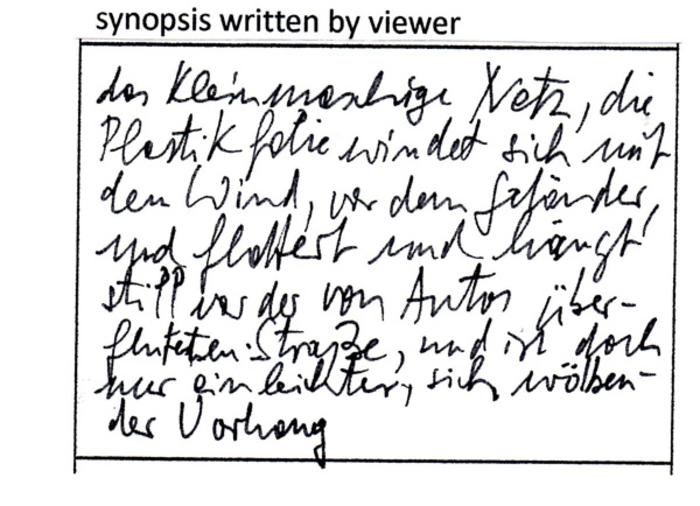
The view from a balcony window in Berlin: one sees elements of Summertime, such as shadows and the movement of plastic wrapping material in the wind, which alternately hides and reveals the view of an intersection teeming with life.
GRÄSER
Germany, 2000, 03’ 00’’, super 8, silent

While in the Cevenne region of France, I filmed a big green grainfield, which came to life as the summer wind blew. The way the entire field and each type of grass moved is reminiscent of waves. It sometimes invokes other sorts of movement.
MURALLA ROJA
Germany, 2008, 09’ 00’’, super 8, silent

The residential estate in Calpe, designed by renowned architect Ricardo Bofill, is as old as I am. I’ve been going there, to the Spanish coast, regularly since I was a child, and have followed developments there over nearly 40 years. At first, it was surrounded by nothing more than weeds. For a long time, almost no one lived there at all, regardless of what time of year I visited: it was a ghost town. Muralla Roa (red walls) was probably the first building that made me consciously aware of architecture. It is a building without a beginning or end; every step offers new perspectives, new vistas.
VOLVER
Germany, 2009, 07’ 00’’, super 8, silent

“Volver” means “to return” in Spanish, a central theme of every Tango piece. Following two months in Argentinien, Saskia still revels in the memory of it all. Yearning and dreaming in the sun, she tells me about her journey.
WASSERSPIEL I
Germany, 1997, 02’ 00’’, super 8, silent
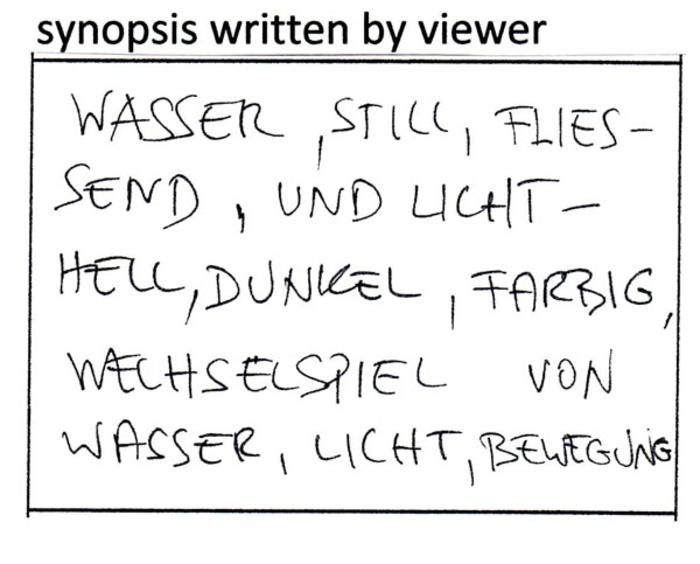
Reflections abound on the surface of the canals in Amsterdam. The buildings are less important than the way the sun blinks onto the water‘s surface, which, after a while, results in abstract images in motion. Shots taken backward in slow motion show an evening sky, with ample clouds. It seems so very different; why it does so remains beyond comprehension.
AUFZIEHENDER STURM
Germany, 1994, 03’ 00’’, super 8, silent

Wind sets a lake in motion, and rain moves along a window screen as a car drives through the countryside. The wind fills an umbrella. It also fills in a bird's wings.
HAUTKLOPFEN
Germany, 1991, 03’ 00’’, super 8, silent
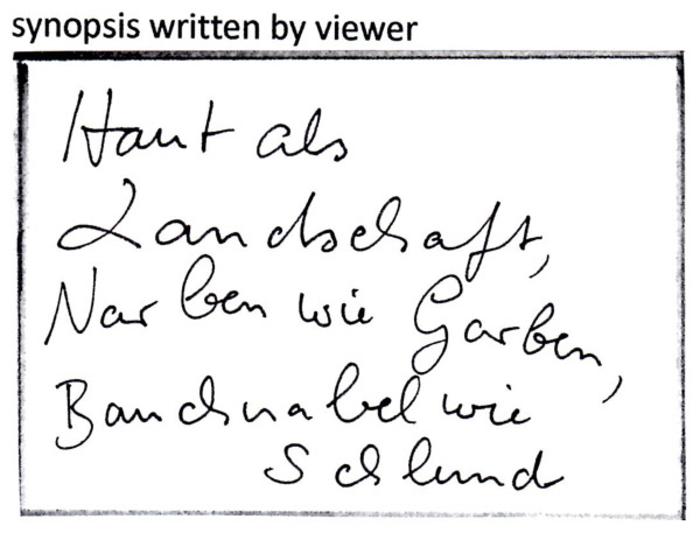
My legs and feet appear differently exposed to the setting sun: the effect of shadows. Using a macro lens, I explore my skin‘s surface until my heartbeat becomes visible.
KLATSCHMOHN II
Germany, 1993, 04’ 00’’, super 8, silent
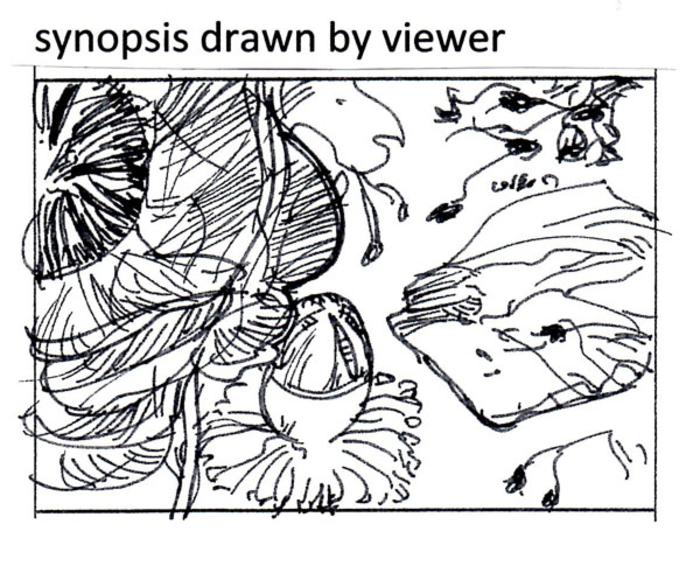
Macro-lens close-up shots of a bouquet of poppies: some flowers are in full red blossom, and some are dried. The poppies‘ black pollen falls onto the floor.
ENTGEGEN
Germany, 1999, 03’ 00’’, super 8, silent

The view out the window of a train toilet reflects itself in a mirror, and vice versa.
ZEIT
Germany, 1991, 09’ 00’’, super 8, silent
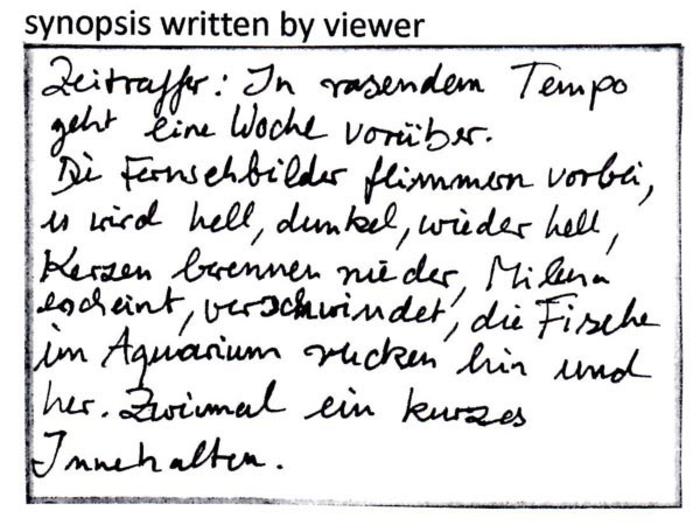
One week captured in time-lapse. Approximately every 8 seconds, I shot a frame. One sees a table with a vase full of gladiolas. The flowers slowly wither. Three goldfish are observed in their aquarium. A candle is replaced as it burns down, and the differing speed with which each candle burns becomes visible. A small television runs non-stop, set on German Channel 1. There‘s a chair on the left where I sometimes sit to eat or read. A clock hangs on the wall, as does a calendar. When the sun shines, the window casts a shadow that meanders along the wall. At night, one sees the reflection of the candle in the static on the television screen. The rhythm of time is interrupted each time I put a new roll of film into the camera, sometimes causing the clock to appear to move backward. Twice reality is captured in “real-time”: when a fish is fatally ill, and once to capture the entire setting.
STÜNDLICH I
Germany, 1991, 06’ 30’’, super 8, silent

Hourly I, February – April 1991. For three months, I filmed a portrait of myself every hour, including my surroundings in the picture. The hours I was sleeping are shown using a black film. I do not consider this film as a self-portrait. Since no one else could be constantly present, I had to film myself as if I were representing any person in real time and space.
FREMDER MANN I
Germany, 1990, 01’ 30’’, super 8, silent
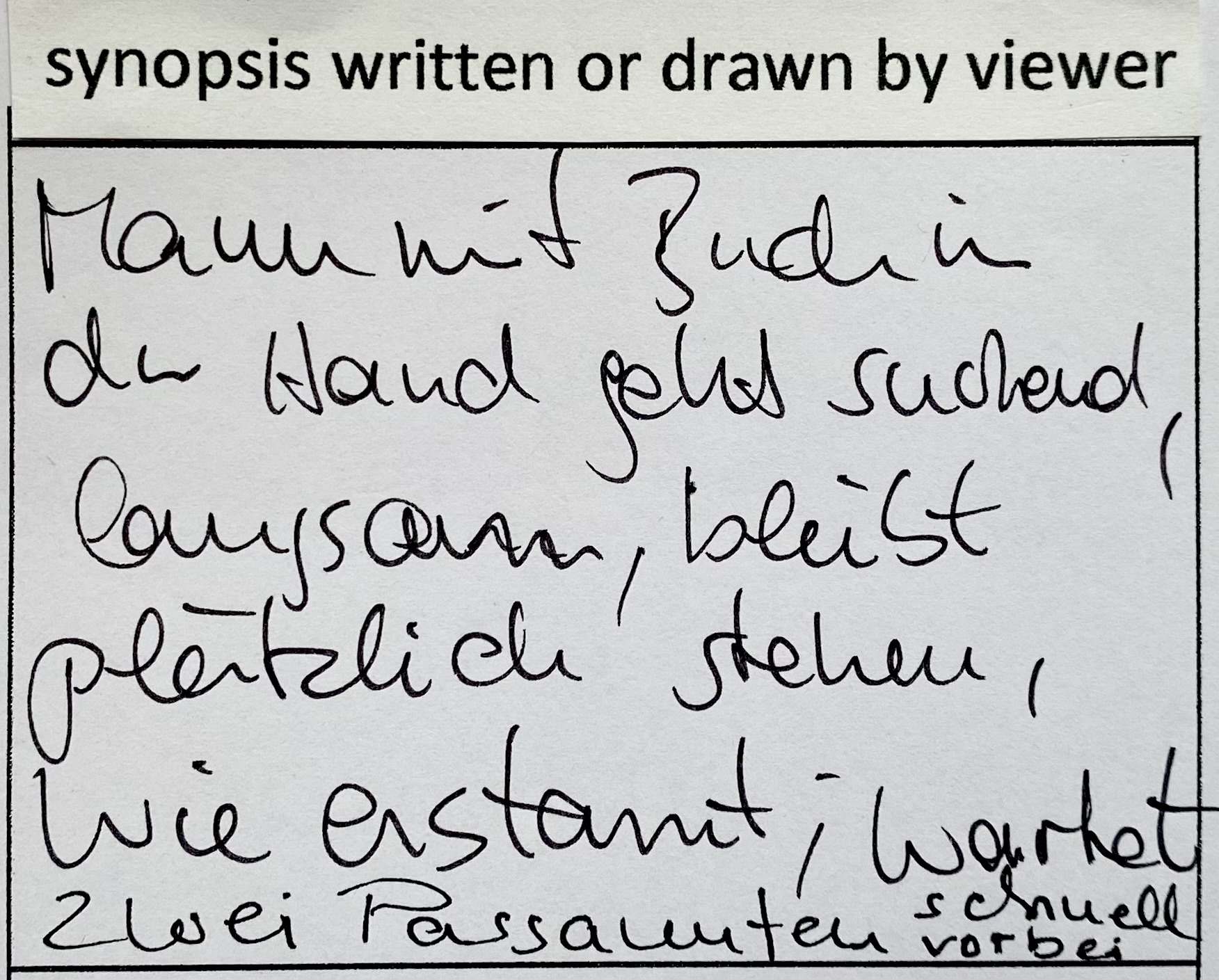
An older man walks slowly down the pavement. He doesn’t notice that he’s being filmed. He appears to be from another world, completely in his own thoughts. Suddenly, without any apparent reason, he stops in his tracks. Other pedestrians continue, in their accustomed, hurried manner, past him.
SCHEDULE 2023
Fri 24
20:00 / ACUD KINO
Selection #2
Cartography of Littleness
22:00 / ACUD KINO
Selection #3
Liminal Space
Sat 25
16:00 / ACUD STUDIO
Workshop
Milena Gierke in conversation with Federico Rossin
19:00 / ACUD KINO
Focus
Milena Gierke
Part 1
21:30 / ACUD KINO
Selection #4
Subterrain Oblivions